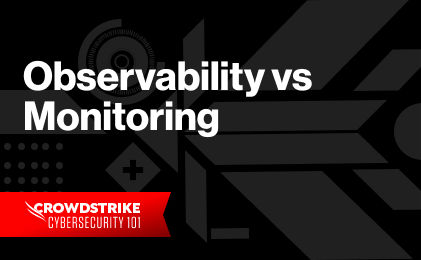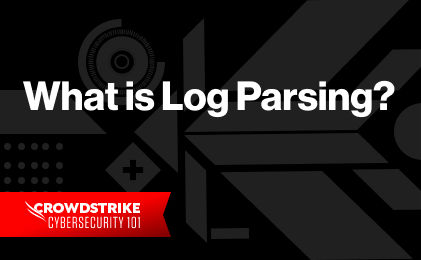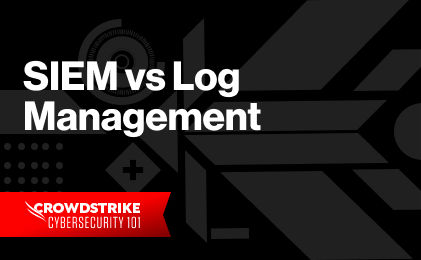Transform SOC with Next-Gen SIEM
Transform SOC with Next-Gen SIEM
Today's IT infrastructures, such as web servers, email, cloud storage, Internet of Things (IoT) devices and so on, produce a tremendous amount of logs that contain vital information. Organizing and utilizing this information can be highly beneficial to any organization.
However, the disparate sources and pure amount of logs create a new problem: It’s nearly impossible to track and monitor logs effectively. Administrators might deal with hundreds of different nodes, ranging from client desktops to IoT devices and spanning many data centers worldwide.
Logging as a Service (LaaS): Definition
Logging as a Service (LaaS) is a cloud-based log management platform that simplifies the management of infrastructure and application logs. LaaS offers a central location where you can store, analyze and visualize the content of all your logs.
It works by ingesting logs from different sources, such as web servers, IoT devices (like smart cars), database servers and more. It then provides actionable output by organizing and restructuring the information within these logs.
For example, LaaS allows you to filter the output of the logs to trigger alerts based on defined conditions, such as when an application stops working or on the detection of a security breach. It can also inform you of the system's state and help you make decisions regarding the scaling of your application.
LaaS is comparable to many other services from cloud providers, such as platforms as a service (PaaS) or software as a service (SaaS). They manage applications, such as email or cloud storage, without you having to worry about the additional management of the infrastructure. Similarly, LaaS offers a place to store and manage your logs without the need to control the infrastructure of the platform.
Traditional Log Monitoring vs Logging as a Service
There are notable differences between traditional log management and LaaS.
In a traditional system, checking the logs from a server requires that you connect to the server and read the logs manually, one at a time. This system works well when you're only managing a few servers. However, container-based applications can have hundreds of services that need monitoring. Manually checking logs for each of these is tedious, time-consuming and error-prone, especially for applications hosted on multiple servers in a distributed environment.
On the other hand, LaaS offers a central location to store logs from every node within a network. It is a distributed logging system that is easily scalable, hassle-free and highly reliable. LaaS allows you to access those centralized logs with tool sets, giving you more powerful capabilities for analyzing and visualizing.
7 Advantages of Using Logging as a Service
Here are some of the many advantages of using a LaaS platform:
1. Easier Log Management
With LaaS, you don’t need to manage your own logging system or start from scratch to create a new one. LaaS can streamline your setup and provide ready-made infrastructure. By utilizing a managed service to aggregate logs, you can also monitor logs without installing software on host machines.
2. Scalability and Reliability
LaaS platforms are generally more reliable than on-premises solutions since you don't have to manage the infrastructure. LaaS providers guarantee uptime through service level agreements. Since you are not maintaining physical on-prem servers, you can scale up and down according to your needs. You can modulate the capacity of your service quickly and efficiently, accommodating more or fewer network nodes or log volumes.
3. Unification
Unifying logs in the cloud makes log management easier. You're less likely to miss important information with a central platform for all logs. You can analyze and better understand the distributed network to improve system performance and correlate events for troubleshooting. Centralized storage of the logs is also important for creating reports and compliance with standards.
4. Advanced Data Analysis
LaaS platforms provide access to powerful tools for parsing and querying logs. Different filters can extract relevant information from a large data pool. You can visualize your data based on predefined criteria or create your own criteria. Using this visual representation of data and completing an analysis shows trends within your data, ensures compliance with standards and highlights potential issues or abnormalities.
5. Standardized Formatting
Logs from servers and applications usually come in varying formats. LaaS standardizes all of these logs into one unified format across the board. This enhances the readability of your data and eliminates confusion when dealing with logs from different sources.
6. Real-Time Metrics
Real-time metrics offered by a LaaS platform can alert the user to security or performance issues as they happen in real time. This allows you to address problems as they occur and preserve the integrity of your system.
7. Better Efficiency
By using a LaaS platform, your IT team no longer needs to maintain the physical IT infrastructure to store your logs. This reduces the capabilities that your IT team needs to specialize in and maintain, which allows you to direct your efforts toward other business areas. By using a LaaS platform, you gain access to specific log tooling that can improve your efficiency over the current in-house log tools you may be using.
Considerations When Choosing a LaaS Provider
LaaS has many benefits; however, there are some challenges to consider. Choosing the right provider has a significant impact on your results. Let’s look at some common considerations.
Privacy and Security
Log data often contains sensitive information. Therefore, LaaS providers must safeguard their systems against security breaches and all cybersecurity attacks. For example, the provider should secure all of its connections using Transport Layer Security (TLS) encryption, enable two-factor authentication, and provide an access control list (ACL).
In addition to these technical aspects, there are also industry-specific guidelines for handling sensitive information. Before selecting a LaaS provider, ensure they comply with your industry's required guidelines or standards.
Vendor Outages
No matter how stable or reliable a cloud provider is, it will experience outages at some point. When an outage occurs, you'll temporarily lose access to your logs and the analytics. All cloud providers offer service level agreements (SLAs) for their products and guarantee a certain level of reliable uptime.
Training for the New Infrastructure
Introducing any new software or platform to your company requires training your employees on the system and will include an adjustment period. Because it requires a significant investment of time and money, consider the advantages and potential disadvantages of this transition before moving to a new platform.
What Are Your Organizations Needs?
First, would a fixed package or pay-as-you-go structure work better for your organization? Depending on the logging needs of your organization, this can heavily impact costs.
Second, what features do you need? Depending on your use case, some features are more critical than others. For example, a startup business might prefer lower pricing and not yet need many of the more advanced features of some LaaS. An established company, like a streaming service, might require advanced alerting mechanisms. They need to be informed of problems as they happen in real time.
Finally, choose a LaaS that easily integrates the cloud provider's platform with your systems. Along those same lines, be sure the provider’s SLAs match your organization's requirements for factors like guaranteed service and security. Your industry or business may require specific security measures when storing sensitive data.
Discover the world’s leading AI-native platform for next-gen SIEM and log management
Elevate your cybersecurity with the CrowdStrike Falcon® platform, the premier AI-native platform for SIEM and log management. Experience security logging at a petabyte scale, choosing between cloud-native or self-hosted deployment options. Log your data with a powerful, index-free architecture, without bottlenecks, allowing threat hunting with over 1 PB of data ingestion per day. Ensure real-time search capabilities to outpace adversaries, achieving sub-second latency for complex queries. Benefit from 360-degree visibility, consolidating data to break down silos and enabling security, IT, and DevOps teams to hunt threats, monitor performance, and ensure compliance seamlessly across 3 billion events in less than 1 second.







